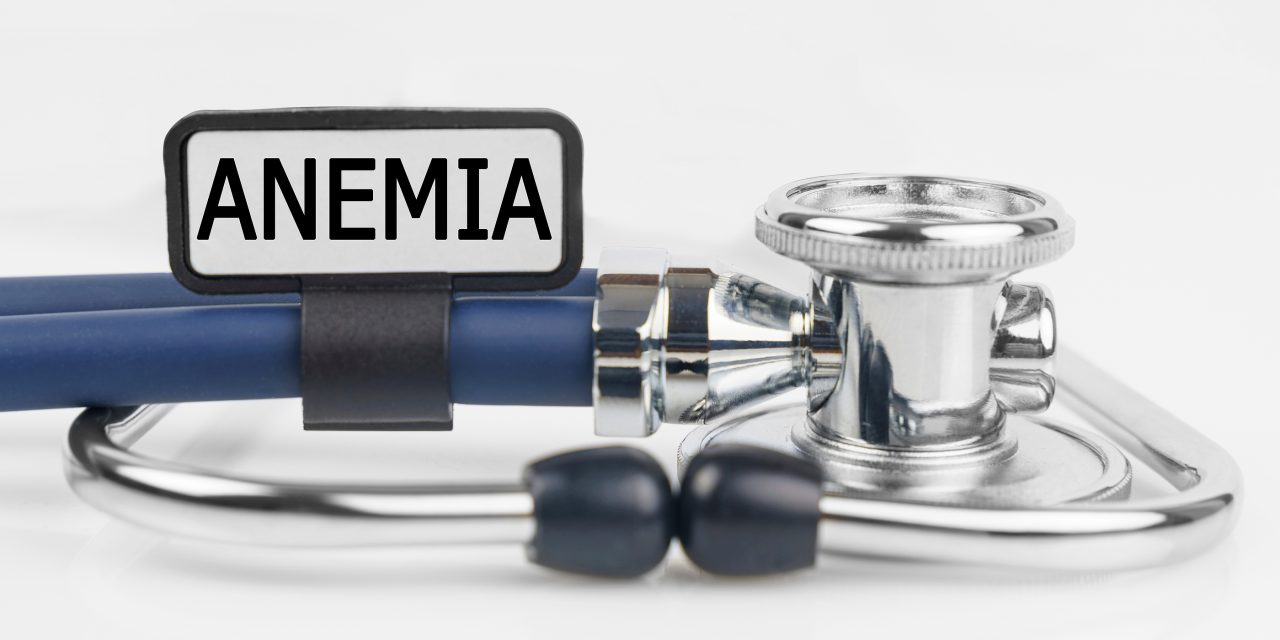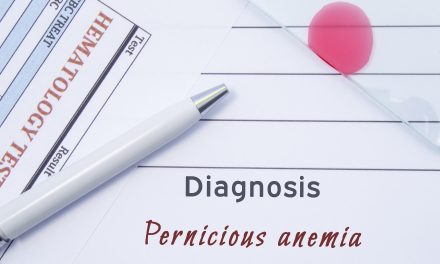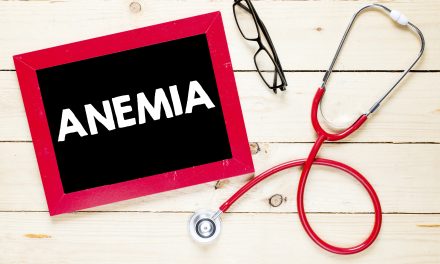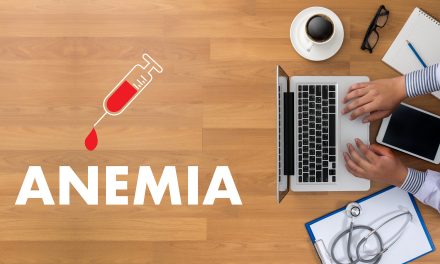The most common cause of anemia worldwide is iron deficiency. Iron is vital for the production of hemoglobin, and without adequate iron, the body cannot produce enough healthy red blood cells. Other nutritional deficits, such as a lack of vitamin B12 or folate, can also lead to anemia, specifically the types that affect cell division and DNA synthesis in red blood cells.
Besides nutritional issues, anemia can stem from genetic conditions, such as sickle cell anemia or thalassemias, which affect the hemoglobin and red blood cell stability. Chronic diseases like kidney disease or inflammatory disorders can cause anemia of chronic disease by interfering with the production of red blood cells or their lifespan. Moreover, conditions like aplastic anemia involve the bone marrow’s failure to produce cells properly, affecting not just red blood cells but also white blood cells and platelets.
Key Takeaways
- Anemia is primarily due to a lack of red blood cells or hemoglobin, leading to insufficient oxygen transport.
- Iron deficiency is the most common cause, while vitamin B12 and folate deficiencies are also significant contributors.
- Other causes include genetic conditions, chronic diseases, and bone marrow disorders.
Overview of Anemia
Anemia is a significant global health issue characterized by a deficiency in healthy red blood cells or hemoglobin, leading to varied symptoms and health consequences.
Definition of Anemia
Anemia arises when the quantity of red blood cells (RBCs) or the concentration of hemoglobin in these cells drops below normal. Hemoglobin, an important protein in RBCs, binds oxygen and delivers it to the body’s tissues. Insufficient hemoglobin levels or RBC count result in reduced oxygen delivery, manifesting in symptoms like fatigue and shortness of breath.
Prevalence and Impact
Anemia affects 1.62 billion people worldwide, which equates to roughly 24.8% of the population. Its prevalence is highest among preschool-age children and women, posing a substantial public health challenge. The impact of anemia on quality of life, cognitive function, and physical health can be substantial, making its prevention and treatment important for individual and societal well-being.
Causes of Anemia
Anemia arises from various underlying conditions that affect the production and lifespan of red blood cells. This section identifies key contributors, ranging from nutritional shortages to chronic conditions.
Nutritional Deficiencies
Iron: Essential for hemoglobin production, iron deficiency is the leading cause of anemia. Sources include meat, beans, and fortified cereals.
Vitamin B12 and Folate: Lack of vitamin B12 or folate impedes red blood cell formation. Natural sources encompass dairy, eggs, and leafy greens.
Bone Marrow and Stem Cell Problems
Aplastic Anemia: Results from the damaged or underactive bone marrow failing to produce sufficient blood cells, caused by autoimmune diseases, infections, or toxins.
Myelodysplastic Syndromes: Disorders characterized by the bone marrow producing poorly formed or dysfunctional blood cells, often leading to anemia.
Genetic Factors
Sickle Cell Anemia: A genetic mutation causes hemoglobin to distort red blood cells into a sickle shape, leading to their premature destruction.
Thalassemia: Genetic defects in hemoglobin production result in anemia and the body’s inability to create functional red blood cells efficiently.
Chronic Diseases
Kidney Disease: Impairs erythropoietin production, a hormone crucial for red blood cell creation in the bone marrow.
Cancer and Other Chronic Conditions: Diseases such as rheumatoid arthritis can lead to anemia of chronic disease, where red blood cell lifespan is reduced.
Iron Deficiency
Iron deficiency is the leading cause of anemia, stemming from inadequate iron levels to produce sufficient healthy red blood cells. It is predominantly due to blood loss, poor diet, or the body’s inability to absorb enough iron from food.
Role of Iron in the Body
Iron is a critical mineral that is necessary for the production of hemoglobin – a component of red blood cells that carries oxygen from the lungs to the rest of the body. Without sufficient iron, the body cannot make enough healthy red blood cells to transport oxygen efficiently, leading to fatigue and weakness associated with anemia.
- Functions of Iron:
- Oxygen transport
- Muscle metabolism
- Formation of certain hormones
- Cellular functioning
Iron Absorption and Metabolism
The body tightly regulates iron absorption in the small intestine. Dietary iron is found in two forms: heme and non-heme iron. Heme iron, derived from hemoglobin and myoglobin in animal food sources, is more readily absorbed than non-heme iron from plant sources.
- Factors influencing iron absorption include:
- The body’s current iron levels
- The type of iron in the diet
- The presence of enhancers such as vitamin C
- The presence of inhibitors like phytates and polyphenols
The liver plays a vital role in storing excess iron and releasing it as needed. Moreover, certain conditions or procedures, such as blood donation or menstruation, increase an individual’s risk of iron deficiency by affecting iron balance.
Vitamin B12 and Folate Deficiency
Vitamin B12 and folate are essential nutrients, and their deficiencies are among the leading causes of anemia. They play a crucial role in DNA synthesis and red blood cell formation.
Importance of B12 and Folate
Vitamin B12 and folate are critical for hematopoiesis—the process by which new blood cells are produced. They are vital for DNA replication and repair, and their deficiency leads to the production of abnormally large, underdeveloped red blood cells called megaloblasts. This specific type of anemia is known as megaloblastic anemia, which can result in inadequate oxygen transport throughout the body.
Dietary Sources
| Nutrient | Dietary Sources |
|---|---|
| Vitamin B12 | Animal products such as meat, fish, poultry, eggs, and dairy |
| Folate | Leafy green vegetables, legumes, nuts, and enriched grains |
People obtain Vitamin B12 almost exclusively from animal products, making it particularly important for vegetarians and vegans to be mindful of their intake and consider supplements or fortified foods. Folate is found in a variety of plant-based foods such as spinach, asparagus, and Brussels sprouts, as well as foods fortified with folic acid, which is the synthetic form of folate. Regular intake of these nutrients through a balanced diet is necessary to prevent deficiency-related anemia.
Hemolytic Anemia
Hemolytic anemia occurs when red blood cells are destroyed faster than they can be made. The condition can arise from autoimmune disorders or inherited conditions which disrupt normal red blood cell life span.
Autoimmune Disorders
In autoimmune hemolytic anemia, the immune system mistakenly attacks and destroys the body’s own red blood cells. Cold agglutinin disease and warm autoimmune hemolytic anemia are two common types of autoimmune hemolytic anemias that are classified based on the temperature at which the immune system’s antibodies react to the red blood cells.
Inherited Conditions
Certain inherited conditions can lead to hemolytic anemia by affecting the red blood cells’ structure or metabolism. Sickle cell anemia and thalassemia are examples of inherited hemolytic anemias. In sickle cell anemia, the red blood cells become deformed, leading to early destruction. In thalassemia, the body’s production of hemoglobin is abnormal, causing the red blood cells to be fragile and short-lived.
Anemia of Chronic Disease
Anemia of chronic disease, also known as anemia of inflammation, is a common type of anemia that occurs in individuals with long-term medical conditions. This form of anemia is characterized by the body’s inability to utilize iron properly, often due to ongoing health issues.
Inflammation and Infection
During inflammation or infection, the body increases the production of certain proteins, like hepcidin, which can reduce iron availability for red blood cell production. Iron is sequestered within cells and becomes less accessible for creating hemoglobin, an essential component of red blood cells. This response is a natural part of the body’s defense mechanism.
Chronic Kidney Disease
Chronic kidney disease (CKD) often leads to a decreased production of erythropoietin, a hormone produced by the kidneys that is critical for the formation of red blood cells. In CKD patients, reduced erythropoietin levels result in impaired red blood cell production, contributing to the development of anemia.
Aplastic Anemia
Aplastic anemia is a rare condition in which the body fails to produce sufficient blood cells in the bone marrow. This can affect red blood cells, white blood cells, and platelets. The exact cause isn’t always known, but it can be triggered by an autoimmune attack, exposure to toxins, radiation, or certain medications, as well as viral infections.
Symptoms of aplastic anemia may include:
- Fatigue
- Shortness of breath
- Unusually pale skin
- Frequent or prolonged infections
- Easy bruising or bleeding
This condition can be detected through blood tests which often show pancytopenia—reduced counts of all three types of blood cells (red cells, white cells, and platelets). A bone marrow biopsy is typically performed to confirm the diagnosis.
Treatment options include:
- Blood transfusions
- Bone marrow stimulants
- Immunosuppressants
- Bone marrow or stem cell transplantation
Prognosis varies with the severity of the condition and the success of the treatment. Prompt medical attention is critical for the best possible outcome.
Diagnosis of Anemia
The diagnosis of anemia involves a combined approach that includes laboratory tests and a physical examination to assess the severity and cause of the condition.
Laboratory Tests
Complete Blood Count (CBC): This is a primary test for anemia that measures several components of the blood, including hemoglobin and hematocrit levels which are critical markers for anemia.
- Hemoglobin: Lower than normal hemoglobin levels indicate anemia. The normal range is generally 13.8 to 17.2 grams per deciliter (g/dL) for men and 12.1 to 15.1 g/dL for women.
- Hematocrit: This is the ratio of the volume of red blood cells to the total volume of blood. Men typically have a hematocrit of 38.3 to 48.6 percent, while women have 35.5 to 44.9 percent.
Additional Tests may be recommended to determine the type of anemia, including:
- Iron tests, such as serum iron, ferritin, and transferrin levels, to detect iron deficiency anemia.
- Vitamin B12 and folate levels to assess for anemia due to vitamin deficiency.
- Reticulocyte count to understand if the bone marrow produces red blood cells at an appropriate rate.
Physical Examination
The physical examination can reveal signs of anemia and may include checking for:
- Paleness of the skin or mucous membranes, a common sign of anemia.
- Heart rate: An increased heart rate or heart murmurs may indicate anemia.
- Jaundice or a yellowing of the skin and eyes, suggesting red blood cell destruction.
- An enlarged spleen or liver, indicative of a possible cause of anemia.
Physicians may also inquire about symptoms like fatigue, shortness of breath, or dizziness, as these can corroborate the diagnosis suggested by laboratory findings.
Treatment and Management
Effective management of anemia revolves around addressing the underlying cause and restoring healthy red blood cell levels. Treatment strategies are tailored to the specific type of anemia diagnosed.
Dietary Supplementation
An individual with iron-deficiency anemia may require an increase in dietary iron intake. This can be achieved through:
- Iron-rich foods: Incorporating meats, beans, and leafy greens into the diet.
- Vitamin C: Enhancing iron absorption from meals with foods like oranges and bell peppers.
- Iron supplements: Often recommended by healthcare providers to boost iron levels quickly.
Medication and Therapy
Depending on the cause, several medications and therapies may be prescribed:
- Erythropoietin Stimulating Agents (ESAs): For anemia due to chronic kidney disease.
- Vitamin B12 injections: Essential for pernicious anemia where oral absorption is compromised.
- Antibiotics: Employed when anemia results from an infection.
Surgical Interventions
Surgery might be necessary to treat certain types of anemia:
- Blood Transfusions: To quickly increase red blood cell count in severe cases.
- Bone Marrow Transplant: Considered for aplastic anemia or other bone marrow disorders.
Prevention Strategies
Prevention strategies for anemia are primarily focused on addressing the underlying causes, with particular emphasis on nutrition and public health measures.
Dietary Measures
One can reduce the risk of iron deficiency anemia by incorporating iron-rich foods into their diet, such as lean meats, beans, leafy green vegetables, and fortified cereals. Additionally, enhancing iron absorption with foods high in vitamin C like oranges or bell peppers is crucial. For those at risk of vitamin-related anemias, a B12-rich diet or folate from sources like eggs, dairy, and grains is beneficial.
- Iron Sources:
- Red meats
- Leafy greens (spinach, kale)
- Legumes (lentils, chickpeas)
- Vitamin C Sources:
- Citrus fruits (oranges, lemons)
- Tomatoes
- Strawberries
Public Health Initiatives
Public health initiatives play an essential role in anemia prevention, particularly in communities with limited access to nutritious foods. Fortification of staple foods with essential nutrients like iron, folic acid, and vitamins is one impactful strategy. Additionally, screening programs and educational campaigns about anemia causes, prevention, and treatment can significantly increase public awareness and promote healthy practices.
- Fortification Examples:
- Adding iron to flour
- Vitamin D in milk
- Iodine in salt
- Educational Programs:
- Nutrition classes
- Anemia screening events
- Public service announcements
Complications of Anemia
Anemia, if left untreated, can lead to numerous health complications. These issues can range from cardiovascular problems to adverse outcomes in pregnancy and developmental delays in children.
Cardiovascular Issues
When an individual has anemia, the heart has to work harder to pump oxygen-rich blood throughout the body, which can lead to a variety of cardiovascular complications. These include:
- Heart failure: An increased workload can weaken the heart over time, potentially leading to heart failure.
- Arrhythmias: Insufficient oxygen can result in abnormal heart rhythms.
Pregnancy-Related Risks
Anemia in pregnant individuals poses significant risks not only to the mother but also to the fetus. Risks associated with anemia during pregnancy include:
- Premature birth: Pregnant individuals with anemia have a higher risk of preterm delivery.
- Low birth weight: Babies born to anemic mothers are more likely to have low birth weight.
Growth and Development Delays
Children with anemia may experience:
- Impaired cognitive development: A deficiency in oxygen and nutrients can hinder brain development.
- Delayed growth milestones: Anemia can slow down physical growth and the achievement of developmental milestones.
Frequently Asked Questions
This section addresses common inquiries about anemia, exploring its causes, treatment options, associated symptoms, health impacts, and variations across different demographics and types.
What are the most common causes that lead to anemic conditions?
Anemia is often caused by iron deficiency, vitamin B12 or folate deficiency, chronic diseases, certain medications, and genetic factors.
How is anemia treated and managed effectively?
Treatment typically involves addressing the underlying cause, which can include dietary supplements, medications, or in severe cases, blood transfusions.
Which symptoms indicate a severe case of anemia?
Symptoms of severe anemia include extreme fatigue, pale skin, shortness of breath, chest pain, dizziness, and cold hands and feet.
In what ways can anemia impact overall health and is it considered dangerous?
Anemia can lead to severe fatigue, pregnancy complications, heart problems, and developmental delays in children. Chronic anemia is associated with increased mortality risk.
How can age and gender, such as in elderly females, influence anemia causes?
Elderly females may experience anemia due to nutrient absorption issues, menstrual blood loss, or chronic disease prevalence.
What are the different types of anemia and how do they vary?
Different types include iron-deficiency anemia, vitamin-deficiency anemia, anemia of chronic disease, hemolytic anemia, and aplastic anemia. They vary by cause, symptom severity, and treatment approach.
Conclusion
In conclusion, anemia can stem from various primary causes, including iron deficiency, vitamin deficiencies, chronic diseases, genetic conditions, and certain medications. Identifying the specific cause of anemia is crucial for developing an effective treatment plan. Seeking medical advice and undergoing thorough testing can help individuals uncover the underlying reason for their anemia and pave the way for targeted interventions to address the condition.





















